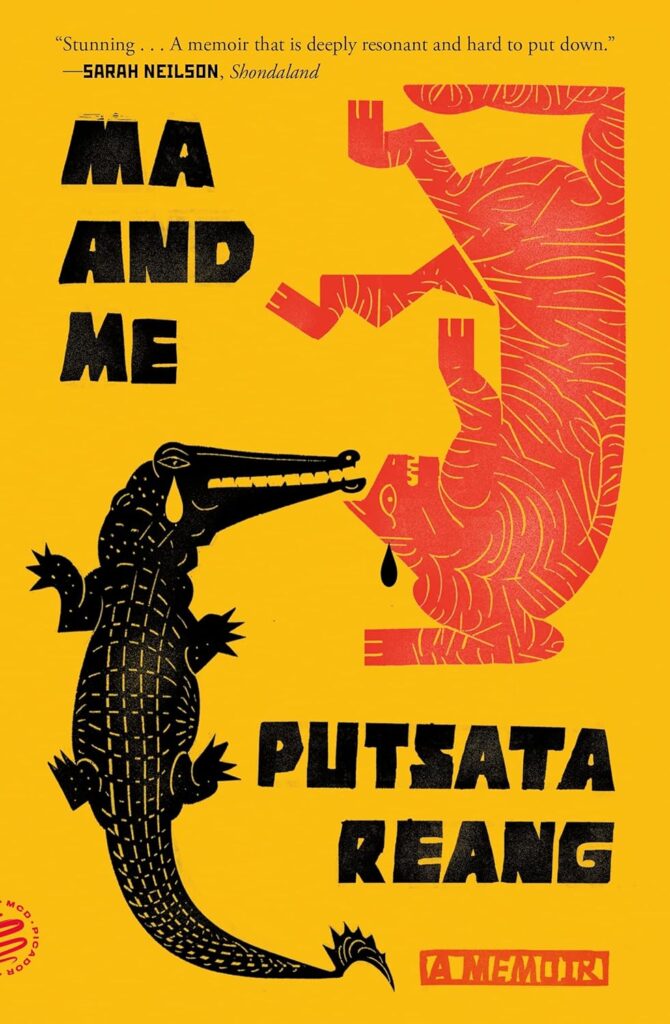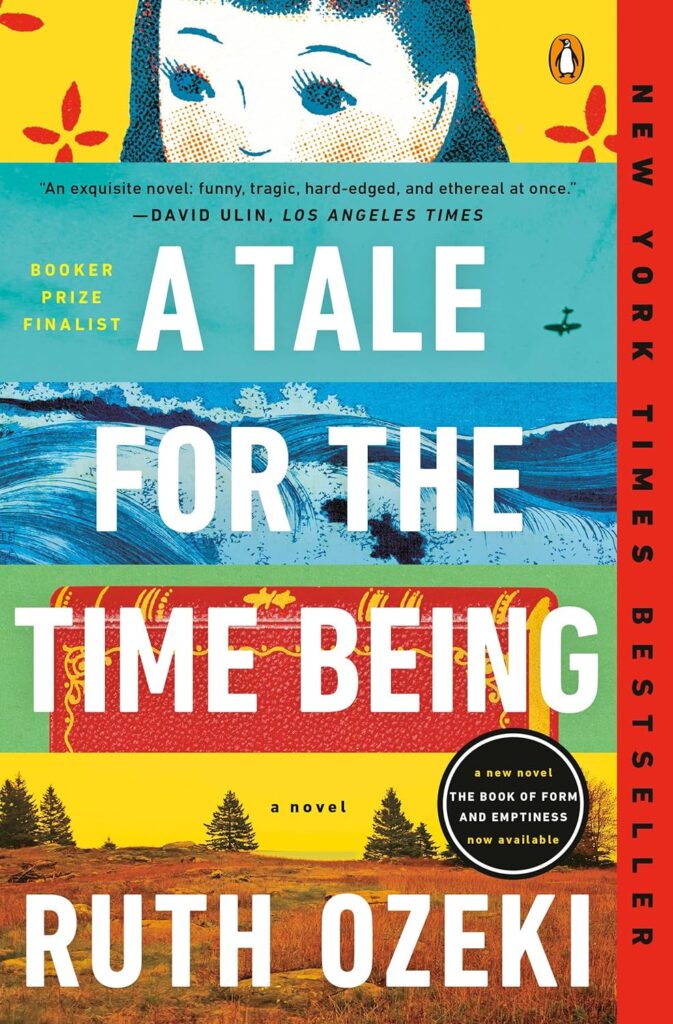At 11 months old, Putsata Reang escaped the brutal civil war in Cambodia that brought Pol Pot and the Khmer Rouge to power in the 1970s. Fleeing with 300 other refugees on a boat designed for a crew of 30, her mother cradled Putsata’s thin and listless body, refusing the captain’s instruction to throw the seemingly-dead child overboard.
When the family had resettled in Corvallis, Oregon, Ma, as Reang’s mother was called, worked fiercely and tirelessly, sometimes with her husband and sometimes against him, to make a new life for their six children while also caring for their extended families, both in the U.S. and in genocide-ravaged Cambodia.
As a child, Reang spent summers picking berries with her family from sunup to sundown on Willamette Valley farms. Enduring her family’s poverty and the taunts of white classmates, she worked her way into journalism school at the University of Oregon and went on to become an award-winning writer.
What set Reang apart besides being an immigrant in a place often hostile to immigrants was discovering that she was gay in a family bound to traditional Khmer norms, which put her at odds with the mother she had always felt inseparably close to. As she pursued a career that took her from working for the Seattle Times and the San Jose Mercury News to helping train journalists in Cambodia, Thailand, and Afghanistan, she did her best to be true to herself while also honoring her mother and her mother’s culture.
Reang first wrote about her experiences with her mother–and the trauma she inherited from her family’s past–in a piece for the New York Times column Modern Love. The column’s success led her to write Ma and Me, a memoir Publisher’s Weekly has called “a nuanced mediation on love, identity, and belonging” and BookPage “a work of lyrical beauty, exploring culture, duty, guilt and family with heartbreaking clarity.”
In 2023, Ma and Me received a Pacific Northwest Book Award. It was also a finalist for a Dayton Literary Peace Prize and a Lambda Literary Prize.
Reang is also the author of Deadly Secrets, a true-crime book based on a murder case she covered as a young reporter for the Seattle Times.
For more about Putsata Reang and her appearance in the Cascadia Writers-in-Conversation Series on Thursday, November 14, click here. For a full bio, see below.

Putsata Reang
WNW: What aspect of the Northwest do you feel hasn’t been adequately addressed in writing yet?
PR: It’s hard for me to answer this because I read broadly, beyond Northwest writers and Northwest themes, but to me there’s so much more room for books written by historically underrepresented writers from our part of the country, and when I say “underrepresented” I mean from the standpoint of society and specifically within the publishing industry. I’m thinking about writers like Sasha La Pointe, and Terese Marie Mailhot (inland Northwest), and then in my own queer community, writers like Katrina Carrasco and Mortada Gzar. More work from these writers, and more voices like these, please!
WNW: How would you characterize your approach to the Northwest in your own writing?
PR: I think there’s a muscularity to my writing about the Northwest, specifically because I come at it in an embodied way. All of my senses are alive whenever I’m home; there’s so much to see, smell, taste, touch, feel and hear.
To write well and to tell a more complete story about any place, you have to be awake to your own senses and the Northwest makes it easy. Whenever I get home from a trip and step out into the open air at SeaTac, I smell the pine and the brine and the pungent loam and immediately the dampness of the air here tickles my nose. The hooting owls in the massive fir trees in my neighborhood and the sky crosscut by crows chasing a bald eagle are enough for me to know that I am back home.

WNW: What is your favorite book about the Northwest and why do you like it?
PR: Instinctively, I have to say Ruth Ozeki’s A Tale for the Time Being. It has everything I want in a great read: existential questions, myths and metaphors, well-defined characters, and an immaculate combination of plot, place and pace that propels you forward through the story.
There’s so much work that goes into writing, but there also has to be a measure of labor on the part of the reader, and that labor is when the imagination is called upon to work. The writer’s job is to give just enough and leave the reader to their own math-making and connecting of dots. Ruth Ozeki is really a master at this.
There’s also something quintessential about the main character, who shares the author’s name, and who is doing what I think is a very Northwest thing—living as a novelist on one of our islands and coming across the diary of a girl in Japan that was swept ashore to where the main character lives after the 2011 tsunami. Who among us hasn’t walked a beach eyeing the expanse for a bottle with a message in it or some other spectacular find? It just happens that for the character in this book, it’s the kind of beachcomber booty that changes her life.

WNW: What is one of your favorite passages about the Northwest from your own writing?
From Ma and Me:
When I was too little to reach across a strawberry row on my own, I crouched close to Ma, the mud-caked wheel of her crate cart clipping my ankle as Ma nudged it forward. She taught me how to search for the biggest, ripest strawberries, and I held up each of my finds victoriously, like I’d plucked a ruby from the mines. When she shifted, raising the metal handle of the cart and scooting it and herself forward, it was my signal to shift, too. We moved like this day after day, for what would turn into years, inching toward daybreak and better light together.
The first thing I learned in the fields from Ma was how to contribute to our new lives in America, how to be worthy of my family.
A note from Putsata about this passage: Some of my best education came from working as a kid in the farm fields of the Willamette Valley, picking berries, back before someone thought to institute child labor laws. I learned about what varieties of blueberries are for juicing and which ones are best for eating fresh; and how to tell time by the shifting sun because as soon as it dialed across the sky and landed west, and the light changed, it was quitting time. Mostly, I learned about the dignity of labor. That there is pride—not shame—in learning how to hustle to have a home and food and clothes. To build a life.
~ ~ ~ ~ ~
Putsata Reang is a long-time journalist who has worked for The San Jose Mercury News, The Seattle-Times, and Spokane‘s Spokesman-Review, among other newspapers. Her stories have also appeared in the New York Times, Politico, Ms, and Mother Jones, as well as the literary anthology, In the Shadow of Angkor. Reang is a recipient of the Alicia Patterson Journalism Fellowship and multiple writers residencies. Ma and Me is her debut memoir. Her first book, Deadly Secrets, is a true crime account of a quadruple slaying in a Seattle suburb that Reang first covered as a young reporter for The Seattle Times. She teaches memoir writing in the University of Washington’s Professional & Continuing Education program.
On Thursday, November 14, Reang will be the next featured author in the Writers-in-Conversation series at the Cascadia Art Museum in Edmonds, WA. The conversation begins at 6 p.m. with Michael N. McGregor as host. Tickets are available on the Cascadia website.
~ ~ ~ ~ ~
Other Links:
“Modern Love: At Sea, and Seeking a Safe Harbor,” essay in the New York Times
Publisher’s Weekly review of Ma and Me
Review of Ma and Me by bestselling author Kitty Kelley in the Washington Independent Review of Books
Note: I’m an affiliate of Bookshop.org, where your purchases support local bookstores. If you buy a book through a click on this website, I’ll earn a small commission that helps defray the costs of maintaining WritingtheNorthwest.com.

Leave a Reply